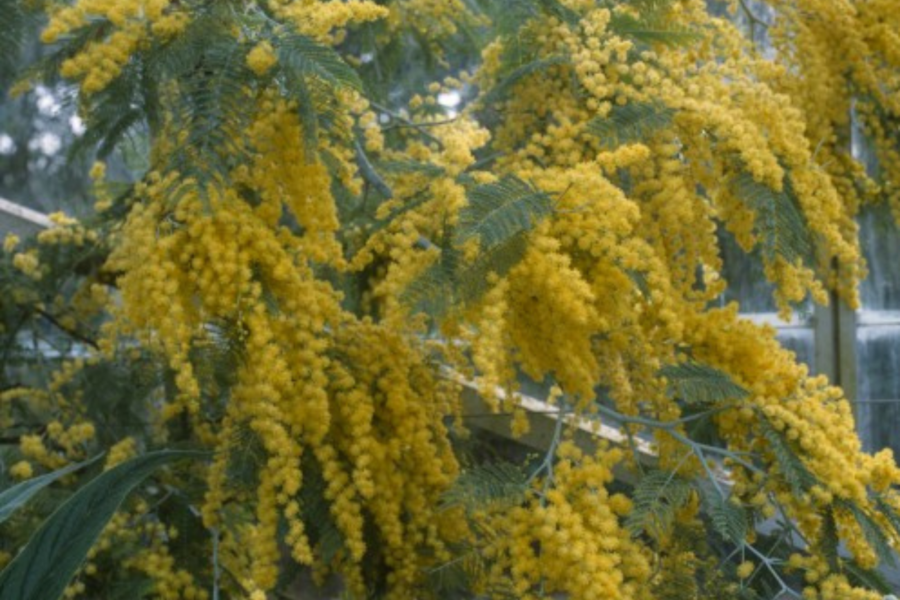While visiting milder parts of the country or passing a sheltered inner city garden during February and March, you’ll occasionally come across a filigree-leaved tree covered in a haze of bright yellow bobbly blossom.
These breathtaking encounters usually reveal themselves to be Acacia dealbata or Acacia baileyana. These distinctive Australian plants vary in size from lofty trees to dwarf shrubs.
If the winter has been kind – as we’ve experienced this year – they can come into bloom as early as the end of January; a harsh winter will hold blooms off until well into March.
Most are too tender for the UK, but those from cooler climes can be tried outdoors or easily grown in pots, placed outside for summer or grown in a cool conservatory.
All produce displays of bobble-headed flowers, from white to yellow, which are often sweetly scented and make spectacular spring displays.
How to grow:
Site the hardier types in a warm, sheltered position in full sun, ideally south facing or against a warm wall
Surface rooting, most prefer lighter, sandier soil to heavier loams so avoid those which are heavy or permanently wet
When happy and unharmed by successive frosts they can soon make substantial specimens. In cold winters if top growth is killed, new shoots can often sprout from the base
Being in the pea family they can also fix their own nitrogen from the air, via nodules on their roots and so can tolerate poorer soils
If applying a balanced fertiliser, apply after flowering, raking the granules in around the roots
They do not require regular pruning, but if needed remove any unwanted growth directly after flowering. Although many acacias will tolerate severe pruning, flowering may be temporarily disrupted
Acacias can be grown from seed, but like many pea-family plants the seed coat will require rubbing with sandpaper to allow moisture to enter. Not all are easy from cuttings
Find more tips, advice and articles like this at the Amateur Gardening website. Subscribe to Amateur Gardening magazine now.





